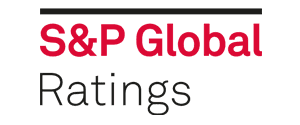Home Securitisation market in the grip of the “cost of living crisis”
Securitisation market in the grip of the “cost of living crisis”

Andrew South, Head of EMEA Structured Finance Research & Alastair Bigley, Senior Director and Sector Lead for European RMBS | S&P Global Ratings
While showing signs of recovery, today’s securitisation market remains partly at the fickle mercy of inflation coupled with rising interest rates, say Andrew South, Head of EMEA Structured Finance Research and Alastair Bigley, Senior Director and Sector Lead for European RMBS, from credit rating agency S&P Global Ratings. They cast their eyes over the market, ahead of this month’s Securitisation Event in Amsterdam.
What does the European securitisation issuance landscape look like from your position?
Andrew South: In 2022, issuance was down about 30% on the previous year at around €80bn which was only slightly higher than the pandemic year of 2020. Looking ahead, we forecast issuance will stay around that level in 2023. There are some negatives for potential issuance this year: firstly, the level of lending on the assets which back securitisations is relatively low, both among consumers and corporations. The origination volumes of leveraged loans which go into CLOs has been very low, for example, and mortgage originations in a lot of countries are also depressed, as are auto loan volumes. Finally, in the UK, several large legacy RMBS transactions refinanced last year but there is nothing similar in the pipeline this year, which will impact overall volume.
Are there also positives to look forward to?
Andrew South: Certainly. There should hopefully be more clarity on interest rate levels and spreads. Through most of 2022 it was not clear what central banks were going to do with policy rates, and how fast they were going to do it. That affected capital markets. Another big positive is that central banks, both in the UK and in the Eurozone, have effectively stopped providing very cheap three or four-year funding to banks as they return to more traditional monetary policy. That means bank originators could come back to securitisation as a funding tool.
Is this a return to “normal” after years of quantitative easing?
Andrew South: Well, quantitative easing and central bank schemes to fund financial institutions were in place for a long time, and that’s partly why bank originators have not been very active in the securitisation market in the last several years. Although monetary policy is now becoming more “normal”, I would not anticipate that bank-originated securitisation will return to the issuance levels of ten years ago. The market has changed. That said, more banks may now at least consider dusting off their RMBS platforms and issuing from them to a greater extent than they have done in the recent past.
What is your credit performance outlook for Europe?.
Andrew South: We don’t think it’s too negative. On the consumer side, prices and interest rates are rising and that is what we are watching. But our macroeconomic forecast suggests that labour markets are going to remain resilient and therefore unemployment is unlikely to rise considerably. Historically, it is rising unemployment which correlates with negative rating actions in European structured finance, rather than inflation and interest rate rises. Therefore, in terms of consumer loan securitisations, we are not overly concerned. On the corporate side, CLOs are of course a major sub-sector of European structured finance. We do expect the speculative grade European corporate default rate to rise, but not significantly. We expect it to reach just over 3% by the end of the year from just over 2% at the moment.
Alastair Bigley: In terms of RMBS, any performance issues are more likely to be on interest-only and variable rate loans. That is still mainly collateral which was originated in the global financial crisis era. Since then, the regulatory position has changed significantly in terms of how loans are underwritten, which changes the performance characteristics of the collateral. Today, there is far more emphasis on affordability in new mortgage origination, which means loans cannot be originated assuming current interest rates will persist.
What do you see as the “cost of living crisis”?
Alastair Bigley: This term describes the dual impact of rising prices — energy bills, food, etc — which affects everyone at some level, combined with rising interest rates which impact what some people have to pay on their monthly credit commitments, such as credit cards, auto loans or mortgages.
Does that situation differ by country?
Alastair Bigley: Yes, in a lot of European countries (and particularly in the Netherlands) there is a medium- to long-term fixed rate mortgage tradition. To a certain extent fixed rates insulate borrowers from the payment shock of rising mortgage rates. However, fixed rate mortgages aren’t widespread in all European countries. In the UK and Ireland, where variable rates are more commonplace, consumers get pinched on both sides as their cost of living increases.
Are mortgage interest rate “cultures” changing across Europe?
Alastair Bigley: We have seen some quite significant and rapid shifts in borrowing trends. Spain and Italy have both shifted from being variable rate markets to more fixed rates over the past three to five years. Even the UK is changing — it used to be very normal to fix mortgage rates every two years but there has recently been a transition to five-year fixed rate mortgages. However, other countries such as Portugal, still maintain a very variable rate market. This is likely linked to cultural norms, rather than current macroeconomics.
Does S&P Global Ratings see borrowers fixing rates for longer as interest rates rise?
Alastair Bigley: While some borrowers are fixing rates for longer, others are reluctant to fix their rates today, as they speculate rates will fall.
What is your expectation for house prices in the Netherlands and the rest of Europe?
Alastair Bigley: We forecast low single-digit house price declines across Europe for 2023. Between about 2% and 4% across all European countries. Beyond 2023, we see more or less flat house prices for the next two to three years. For the Netherlands we forecast -2.5% this year and flat next year. The reason we forecast these relatively benign house price declines is that we expect employment to hold up very well. That will likely limit forced sales, for example. And despite these price trends, there is a supply shortage in the European housing market. Therefore, houses which do come on the market are often in demand.
How might that affect the securitisation market?
Alastair Bigley: Spreads are still quite high and volatile for parties seeking a securitisation exit. This can dampen mortgage supply as non-bank lenders, certainly in the UK and Dutch markets, have uncertain exit routes. These lenders are cautious about originating assets which cannot be securitised profitably. Market confidence also plays a role: lenders tend to contract loan-to-value ratios slightly when there is a feeling in the market that house prices are likely to be squeezed, which also dampens demand.
What have you been seeing in the RMBS market so far in 2023?
Alastair Bigley: January was certainly quite successful and that prompted other potential issuers to contemplate issuing. We saw February split into the early and late halves of the month. New transactions came to the market early in the month. But later, less encouraging inflation numbers sparked a renewed rise in swap rates which makes lending more expensive for non-banks (which make up the majority of RMBS issuers) and that makes securitisation a challenge. A lot of potential issuers are in a holding pattern right now. Investors are clearly interested, but it is a cautious market.
What do you hope to see at the Securitisation Event?
Andrew South: The securitisation market is always innovating. As underlying lending markets evolve and new products are launched there, then it is only a matter of time before they will be securitised. I will be looking out for new trends in Amsterdam. In the ABS space for example, there is currently interest in Buy Now Pay Later loans as a securitisable asset class, but in Europe there hasn’t yet been a deal backed by those kind of loans. We receive a lot of inquiries about it, so I would be interested to hear more.
Alastair Bigley: Solar ABS also has potential: ABS backed by loans that fund, and are potentially secured on, solar panel installations. That’s not an asset class in Europe yet, but we have seen these securitisations in the US. We recently also saw the first European auto ABS where 100% of the underlying vehicles had alternative power trains, i.e., not solely internal combustion engines. I will be on the look-out for anything similarly ground-breaking at the event.
For more information or tickets, visit the eventpage of the Securitisation Event 2023.
Securitisation Event
The Securitisation Event, where more than 250 participants come together annually to discuss developments...
Download the brochure
Share
